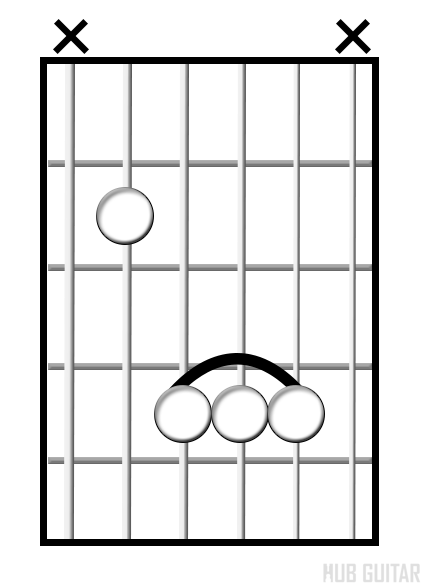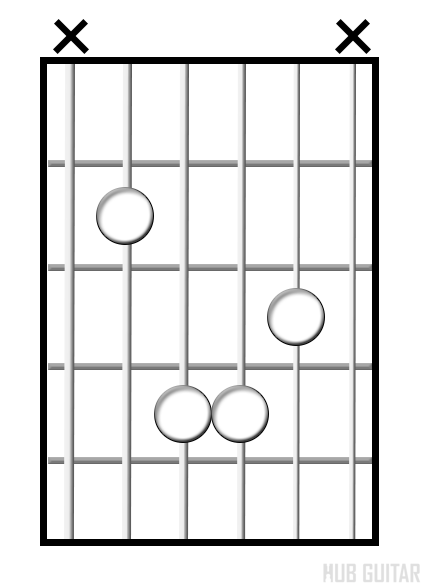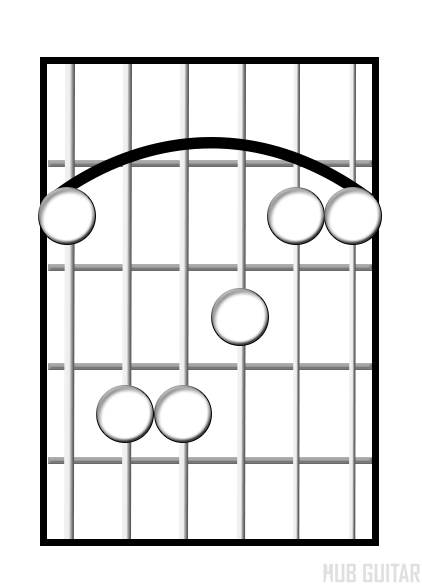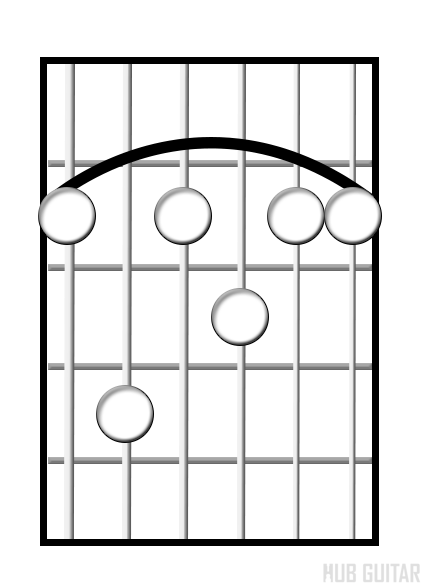怎样弹奏大横按(简介)
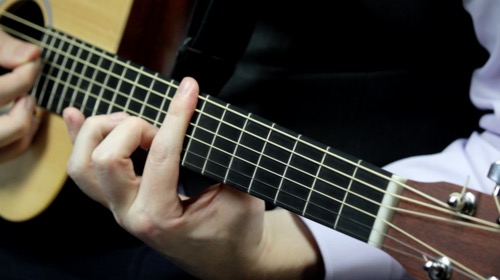
Hi. This is Hub Guitar.
Barre chords are sometimes a stumbling block preventing intermediate players from moving into more advanced levels.
The good news is that this obstacle can be overcome with patient practice. The problem has a lot to do with technique, so be sure that your technique is sound and that you are doing what you can to strengthen your hand and wrist. It's also a good idea to make sure your guitar is set up properly, and that the action is low enough, so make sure the strings are not too high.
We're going to do some barre chords with the root on the sixth string, as well as some with the root on the fifth string. We'll do major, minor and dominant chords for both. With these six chord shapes, you'll be able to play almost any song.
You want to be aware that if the string passes directly underneath the finger joint of the barre finger, you might have trouble pushing the string down correctly because it can actually get stuck in that little crease in your joint. So I'm gonna show you an example of that. This guitar I'm playing has a little bit of a narrow nut width. So sometimes I found that when I'm playing barre chords, the strings starts to pass directly underneath that joint and it will make it difficult to barre it correctly. So I'm gonna show you the six barre chord shapes that you should start with. The first three are going to start with the root on the sixth string. So we're going to do a C major here. This is a lot like the E shape you've probably learned as an open chord, but it's moved up here, and you've got the index finger barring strings one, two and six, then turn it into a minor you lift this finger up. That's not all you have to do, because if you don't have a good enough grip on the guitar, you're not gonna hear that note. You can cheat if you want, you can stack two fingers together, no one says you can't do that. So there is the minor, same thing as the E minor shape, the seventh of course, same as the E seven shape. Again you have to make sure that, especially if that string is passing underneath your finger joint that you're able to squeeze it enough. So there is your C7. Now we're going to do three more with the root being here, C on the fifth string. So the first is the C major, same thing as the A major open shape. There is an optional high note here if you wanna play that. And C minor is same as the A minor. So you're using your first finger to barre fifth and first. Finally C7 is same as A7. Again you're gonna make sure any of those notes being played by the barre have enough support. You can use two fingers when that's available. One more note about the major shape here. The barre and this chords actually are the third finger. So you have to collapse that joint so that you can play three or more strings with that finger.
So once you've got these 6 shapes down, you'll be able to play almost any song that you would hear on the radio. That will allow you to take your playing to a whole new level.
提醒
提醒: 封闭和弦(Barre chords)(有时候被误叫作 “bar” chords)是初学者通往中级水平的一块绊脚石,其实它的关键就是要每天的练习来加强你手部的力量。在练习的过程中,如果有需要,你可以使用特殊的工具来帮助你增加力量,你还可以把吉他交给修理师,让他们帮你调整到最“容易弹奏”的位置,他们应该知道怎么帮助你。
学习封闭和弦(Barre Chords)
牢记六个和弦形式。
选择两种方法来弹奏这些和弦:Cmaj, Gmin, B7(属音和弦)。
掌握这个和弦最好的练习就是从第一品开始,然后弹第6弦根音大调音阶,接着弹第五弦根音大调音阶,然后移动到第二品重复一遍。一直这样持续直到第XII品再返回。
5th 弦根音
6th 弦根音
本日目标
- 牢记以上六个封闭和弦。
- 用封闭和弦来弹奏和弦:G, C, D, E小调。
- 当你碰到有两种方式弹奏的时候,尝试用离你最近的那个。
 As the creator of Hub Guitar, Grey has compiled hundreds of guitar lessons, written several books, and filmed hundreds of video lessons. He teaches private lessons in his Boston studio, as well as via video chat through TakeLessons.
As the creator of Hub Guitar, Grey has compiled hundreds of guitar lessons, written several books, and filmed hundreds of video lessons. He teaches private lessons in his Boston studio, as well as via video chat through TakeLessons.